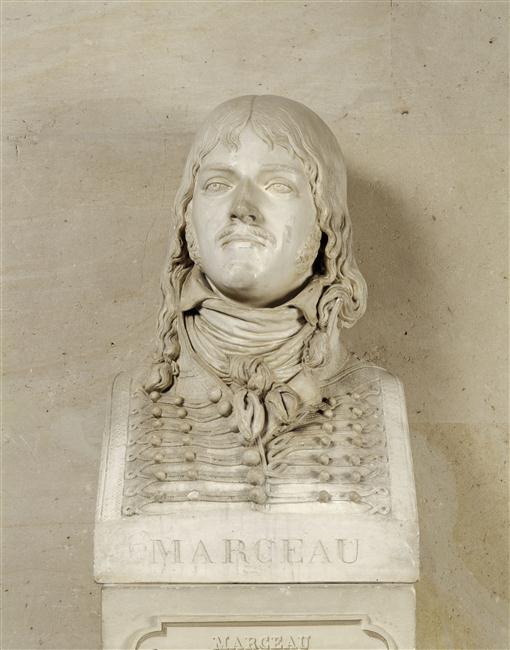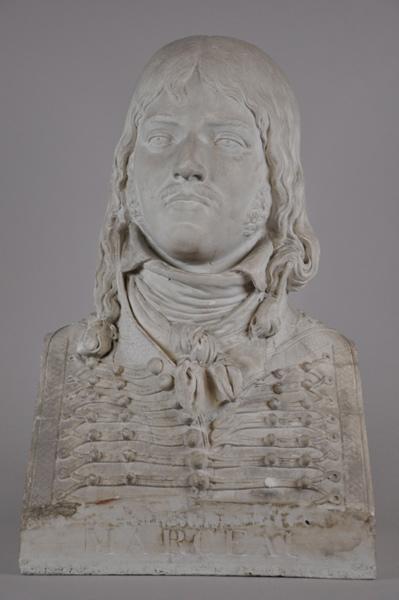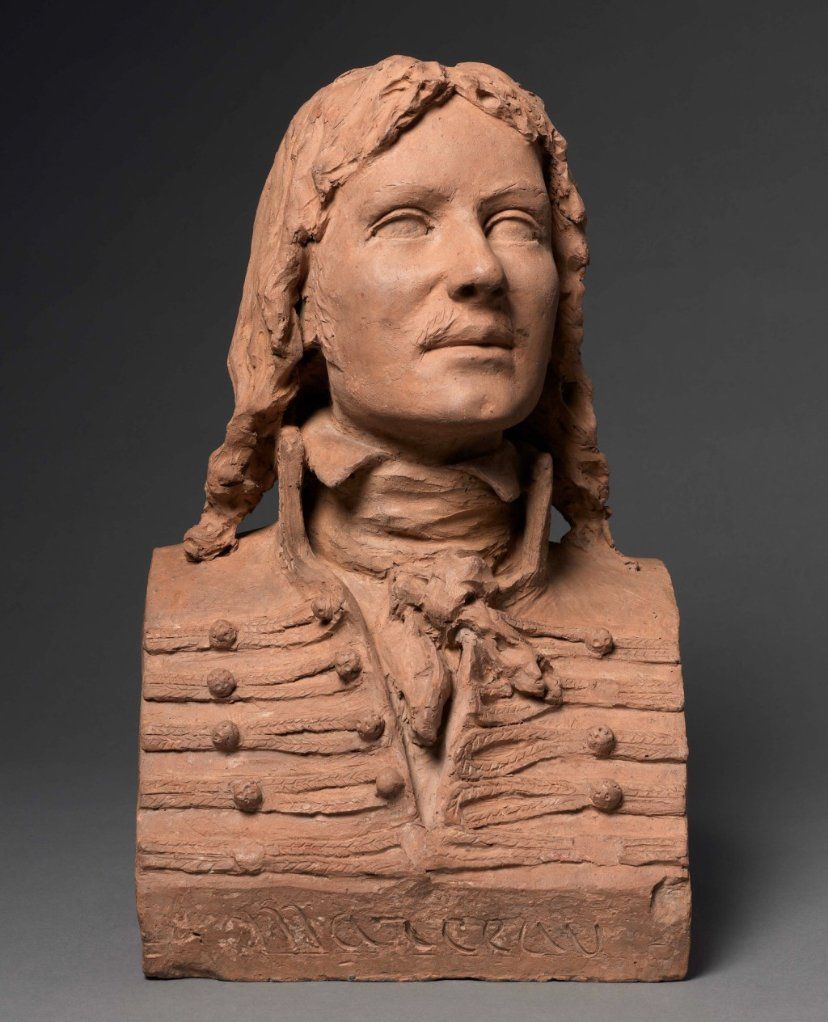
Jacques-Edme DUMONT. 1761-1844.
Sculptor.
Bust portrait of General Marceau. Circa 1802.
Terracotta, titled "Marceau" on the base; missing four buttons on the dolman.
Dimension : h: 49 x 29 x 23 cm
Son of Edme Dumont (1720-1775), sculptor to the king, Jacques-Edme Dumont (1761-1844) learned sculpture in 1775 in the studio of Augustin Pajou, a friend of his father, then entered the Royal school for protected pupils, directed by the same Pajou. He won the second Prix de Rome in 1783 and then the First Prize for sculpture in 1788 with La mort de Tarquin. He then stayed at the Académie de France in Rome where he trained in neoclassical art, then spent some time in Naples before returning to France in 1793. Dumont exhibited at the Salons from 1795 works of republican or classical inspiration ( Paul and Virginia); but his career as a sculptor only really started under the Consulate and the Empire where he received official orders, creating portraits or decorations of statues or bas-reliefs, mainly for the Louvre Palace. He was notably selected from among the best sculptors of his time, responsible for creating a series of busts of generals of the Revolution, commissioned by First Consul Bonaparte; for this, the administrators of the National Museum ask Dumont to execute the portrait of General Marceau (1800), and that of General Causse (1802). Later, among other works that would bring Dumont fame were Jean-Baptiste Colbert's sculpture for the steps of the Palais Bourbon (1808), the group of Vulcan surrounded by the armor he made for the gods, for the staircase of the Louvre Palace (1812), Malesherbes for the Palais de Justice in Paris (1819), The Tragedy and the Comedy of the Cour Carrée du Louvre (1824), or the statue of General Pichegru (1824).
For the bust of General Marceau, Dumont presented a first work in terracotta (or plaster) at the Salon of 1800 (n°427), then the definitive sculpture in marble at the Salon of 1801. Placed in the Galerie des Consuls (Galerie de Diane) at the Tuileries, the sculpture will be destroyed by the Commune during the fire of 1871. The Louvre Museum today keeps a terracotta bust, of great finish and very close to our copy (inv. RF 2988 ). Considered the model for marble, this bust had been offered in 1855 by Auguste Dumont, son of the sculptor [National Archives, Series S8 of the National Museums, n°20144793/17, May 5, 1855]. There are still two casts of this bust, which had been commissioned by Louis-Philippe from Jacquet for the Historical Galleries of Versailles. Finally, two other full-length portraits, this time of Marceau by Dumont, are in the Louvre (Inv. 2711 and 2707), and are the preparatory models for the sculpture commissioned in 1804 for the Luxembourg Palace [Don du commandant Dumont , February 1937; National Archives n°20144793/20].
Our terracotta bust is most likely the preparatory sketch for the portrait of Marceau. Perhaps it was still envisaged that this model would serve to adorn the Palace of Saint-Cloud. There is indeed an order for Saint-Cloud, busts of general officers and aides-de-camp of the Emperor who were killed, a request expressed in the course of the year 1803 by General Duroc, Governor of the Palaces (Archives Nationale, Series P6 of the National Museums, n°20144793/12].
Study of work for this important portrait, the work presents the same modeling treated with vigor as the copy preserved in the Louvre; it reveals many traces of tools and is largely hollowed out from the back. Compared to the example kept in the Louvre, there are a few variations, particularly at the level of the bust facing left. Although sketched, the smallest details of the Hussar uniform and especially of the hairstyle, are inscribed in the earth. If we find in our bust the voluntary and martial expression of the definitive work, Dumont offers us here an almost romantic vision of General Marceau; the collar is more widely open, the hair is treated in large strands which fall carelessly over the shoulders and the scarf seems to be agitated in a slight breath.
François-Séverin Marceau-Desgravier dit Marceau (1769-1796) was and remains a mythical figure among the generals of the Revolution. Committed at 16, general at 24, he took part in the Vendée wars, distinguished himself at the battle of Fleurus and then at the blockade of Mainz; he died a hero at the age of 27 in the middle of the countryside under Austrian bullets. The sculptor Dumont offers us a superb portrait of him, striking thanks to the modeling of the terracotta, endeavoring to give the expressive look of the young hero, while keeping the exterior details of the character (uniform and hairstyle).
Related works by sculptor Jacques-Edme Dumont.
- Marceau, major general, terracotta bust (Year 8, 1800), Louvre Museum, inventory RF 2988, Auguste Dumont collection (1801-1884), donated by his descendant in 1937.
Probably the model of the marble ordered on March 23, 1800 by the Minister of the Interior and intended for the gallery of the Consuls (Galerie de Diane) at the Tuileries Palace. The marble exhibited at the Salon of 1801, n°429, disappeared in the fire of 1871; a plaster copy is kept at the Versailles museum, another at the Chartres museum (MV 526 and 1582)
Related works, by the sculptor Jacques-Edme Dumont (continued)
- Marceau in hussar uniform, terracotta statuette (c. 1804), Louvre Museum, RF 2711, former Paul Cailleux collection (1884-1964).
- Marceau in ceremonial uniform, terracotta statuette (c. 1804), Louvre Museum, RF 2707, collection of Commander Dumont, descendant of the sculptor.
These are the two small models (first and second version) of the statue commissioned in 1804 by the lenders for the staircase of the Conservative Senate in the Luxembourg Palace (statue which disappeared during the Restoration).
- Marceau, bust of General Marceau, circa 1801, Nogent sur Marne, Camille Claudel Museum, Inv. 1905-24, Vve Dubois Paul collection
- Marceau, bust of General Marceau, 1835, Museum of Versailles MV526. Molding commissioned by Louis-Philippe in 1835, on the work presented at the Salon of 1801.
Sources
- National Archives. Former S6 and S8 series – National museums
Bibliography
- G. Hubert, Two models of Jacques-Edme Dumont, Review of decorative arts, volume 3, 1951, pp. 181-183.
- S. Lami, Dictionary of sculptors of the French school in the eighteenth century, Volume I, 1910 (republished 1970), pp. 301-306.
- A family of artists: Les Dumont, 1660-1884. Delagrave bookstore, 1890.
- J. Benoit, A series of busts of generals and officers who died during the Revolution and the Empire, in Revue du Louvre, I, 1985, pp. 9-20
Bust of Marceau (Private Coll.)
Bust of Marceau (Louvre Museum)

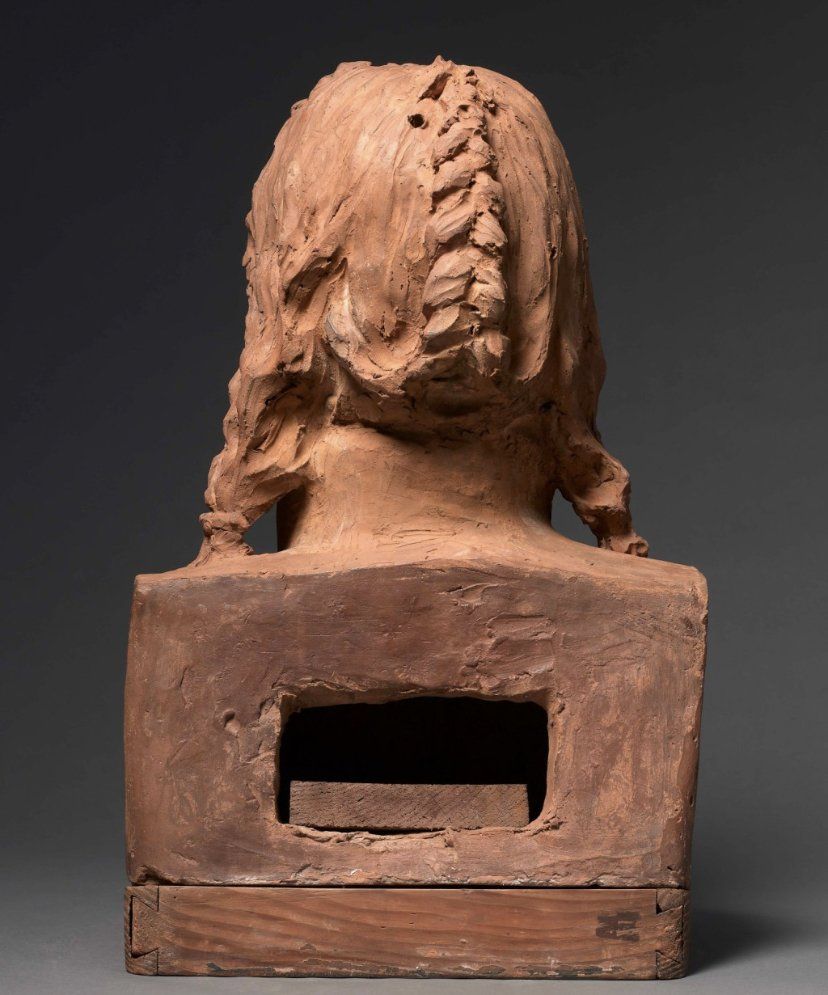
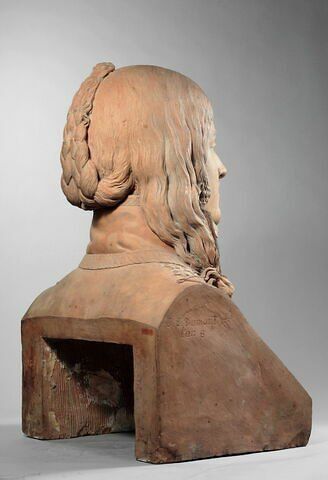
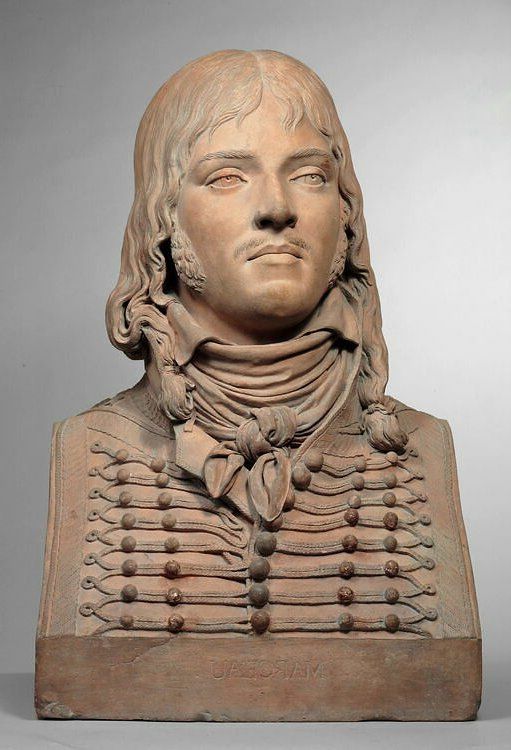
(Museum of Versailles)
(Camille Claudel Museum)
